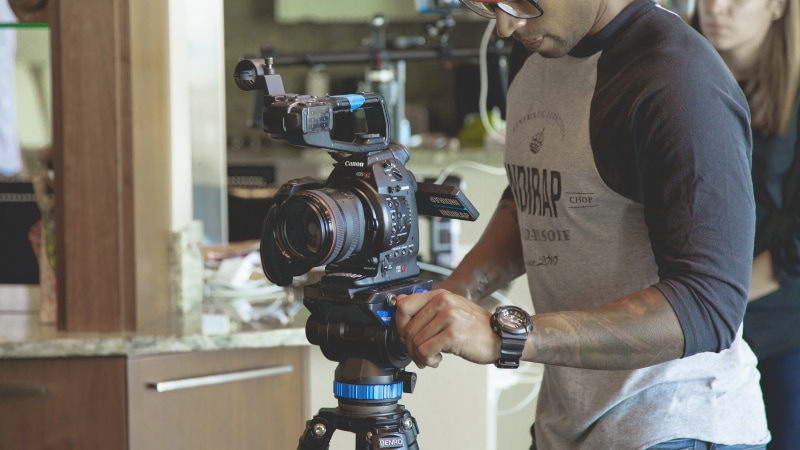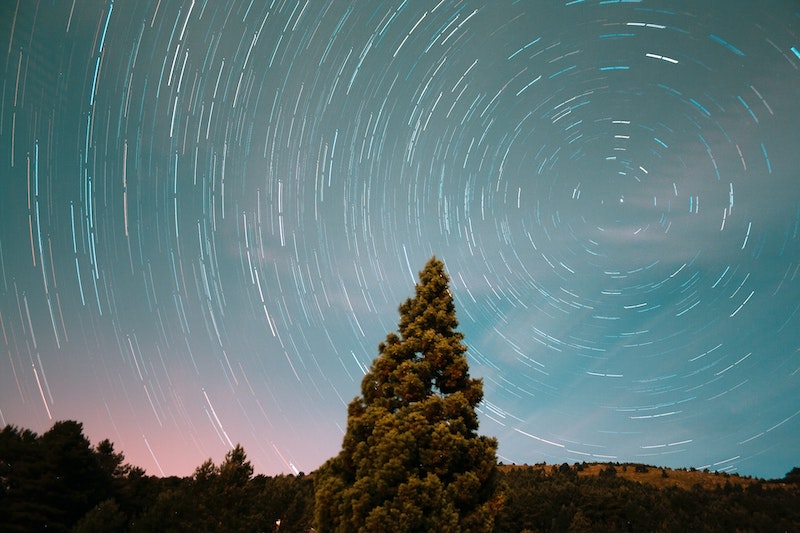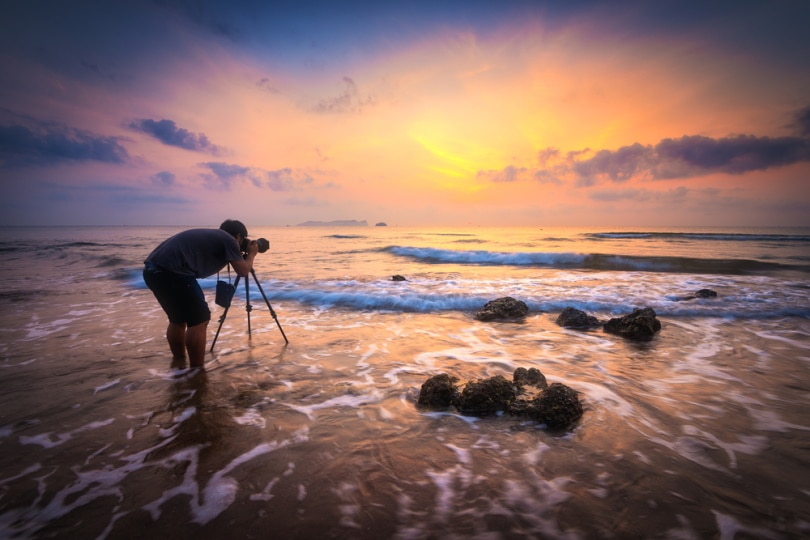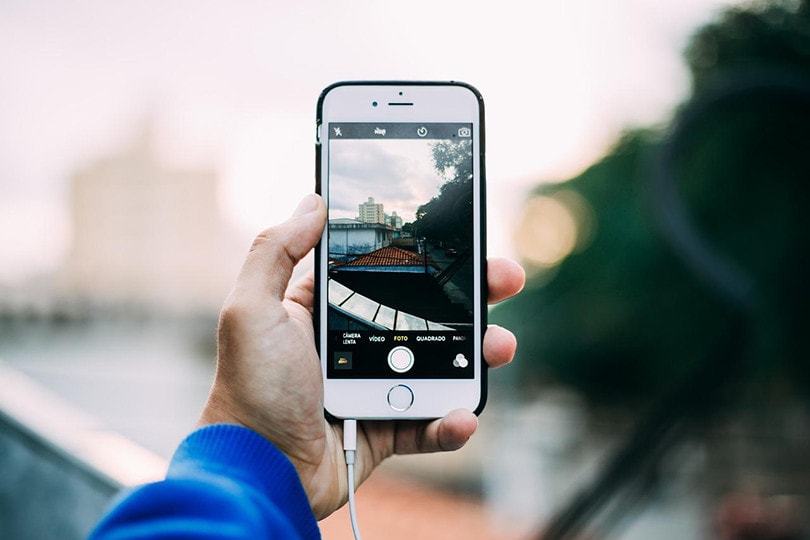What Is a Time Lapse Video? Photography Basics Explained
Last Updated on

It’s been over 140 years since a man named Eadweard Muybridge captured the motion of a galloping horse on film. At the time, his unique method was revolutionary: using a camera to photograph movements the human eye couldn’t detect. The results, back then and still today, were astonishing and, at the time, earthshaking. Horses were the primary means of transportation, and how their legs moved when they galloped was a hotly debated topic. Muybridge’s time-lapse video put the argument firmly to rest.
Since the early days of time-lapse photography, how humans look at and perceive our world has never been the same. Time-lapse photography has been instrumental in, for example, measuring the effects of climate change, something imperceivable to the naked eye. It’s shown us how cities expand, how skyscrapers are erected, how plants react to light and sound, and much more. Read on to discover the basics of time-lapse photography and how this relatively simple photographic technique produces eye-opening, reality-shifting results.

How Does Time-Lapse Video Work?
The time-lapse video technique involves shooting individual frames (i.e., photos) at a slower speed than the normal photography rate. By doing this, it takes less time to play back the video, but more elapsed time can be seen. In effect, time-lapse video shortens the time it takes to see a process or movement happen.
The process or movement can be anything, from the growth of a puppy from 1 day to 1 year, the movement of the stars during a clear night, or the deforestation of the Amazon jungle over 5 years. By taking fewer pictures than usual, the time it takes to view the movement or process when played at normal speed is considerably shortened. That enables you to see days, weeks, and even years’ worth of change in seconds.
The difference between time-lapse video and normal-speed video is that, for time-lapse video, the FPS (frames per second) rate is very low, and very few photos are taken. It can be as little as one photo every 10 seconds or every week; the choice is up to you. For regular-speed video, the FPS is much higher so that the video quality is high and the images are crystal clear when played back at regular speed.
The true beauty of time-lapse video becomes apparent when the video is played back. Because there are fewer photographs in a time-lapse video, it “speeds up” whatever is happening to the subject. The viewer sees changes happen in minutes that usually take days, weeks, months, and even years.
A skyscraper being built is an excellent example. With normal speed, you would need to watch approximately 5 years of video, 24 hours a day, to see it erected from start to finish. With time-lapse video, however, you can see the entire process in 5 minutes or even faster, depending on the FPS.

By taking fewer pictures, a time-lapse video gives you a condensed version of reality, whether a skyscraper being built, a flower blooming, or the night sky passing by as the Earth rotates underneath. Of course, you can see all of these things in normal time, but the changes while you watch are so slight they’re imperceivable. In other words, using time-lapse, you make the imperceivable perceivable and allow viewers to see things they would never have seen otherwise.
You can also set the FPS higher or lower to show the passage of time at different rates. This FPS change is helpful when shooting longer or shorter duration processes such as a seed germinating or rainforest deforestation. The former takes several days while the latter takes several years, which demands a different FPS for both situations. Using time-lapse, you can make both come to life with brilliant and almost magical results.
What Are the Different Types of Time-Lapse Photography?
As time-lapse photography has evolved, several new and exciting time-lapse techniques have been created, all with slightly different ways of recording. Below are several of the most popular time-lapse techniques in alphabetical order.
Aerial Hyperlapse
Time-lapse videos taken from a flying vehicle, including a plane, helicopter, drone, hot air balloon, glider, etc., are known as aerial hyper-lapse (aka hyperlapse) videos
Astro timelapse
An Astro-timelapse, as the name suggests, is a time-lapse video of the night sky. All aspects of time-lapse photography are present, but the video is taken at night, which demands different FPS, white balance, and other settings.

Basic timelapse
A basic time-lapse video involves your camera’s fixed settings and a camera set in position. The position and settings never change while the timelapse video is recorded. Many smartphones have a basic time-lapse video option you can use at the tap of a button.
Flow Motion Hyperlapse timelapse
Flowmotion hyper-lapse, created by Rob Whitworth in 2014, is a combination of hyperlapse video and post-production techniques that make it appear as if you took the entire time-lapse video in one long shot. However, that’s rarely the case, as most flow motion hyperlapse videos are a series of different time-lapse videos stitched together to make a false “master shot.” The results are stunning, but the time and effort to set up the timelapse technique are elaborate.
Focus Pull timelapse
This time-lapse method changes focus during the video, pulling the focus, so to speak, from one part of the video to another. It’s an interesting and eye-catching technique but is also challenging to shoot successfully.
Holy Grail timelapse
This technique is reserved for shooting time-lapse videos of a sunrise or sunset. The trick with this technique is that, as the ambient light changes during the event, the exposure setting of your camera needs to change with it. That makes shooting a holy grail timelapse a bit more difficult than other time-lapse techniques.

Hyperlapse timelapse
A hyperlapse time-lapse video combines the movement of the object being filmed with the camera moving. Drones and cars are perfect for taking hyperlapse videos and capturing movement over a large area while also moving through the area. You can also use a gimbal, a GoPro, or a smartphone to take hyperlapse videos.
Motion Control timelapse
Motion control time-lapse videos are very similar to hyperlapse videos with one significant difference; motion-control equipment is used to move the camera, not the photographer. A device with a motor is connected to the camera and moves it very gradually and precisely.
Plant timelapse
A plant time-lapse video involves setting up a dedicated camera with the proper lighting to video plants as they seed, germinate, sprout, bloom, and otherwise change and grow.

Where Is It Used?
Time-lapse photography is used whenever a photographer wants to expose the subtle, minute changes in an environment or an object. Scientists use time-lapse photography, as do botanists, conservationists, and professionals from other industries.
Anything that moves or changes with time (which is almost everything) can be shot using one of the time-lapse techniques we discussed earlier. Below are a few examples:
- Large-scale construction projects like bridges, stadiums, skyscrapers, and tunnels
- Documenting plant life from seed to full-grown plant. On a larger scale, time-lapse can be applied to entire crops
- The long-term changes to an ecological environment, like the rainforest, the Arctic, or a big city
- The movements of insects, animals, and humans as they go through their daily routines
- The movement of the planets, the moon, eclipses, meteors, and other astronomical events
- How different organic objects break down, degenerate, and rot can provide fascinating information about how life regenerates
Advantages of Time-Lapse Photography
The advantage of time-lapse video is that you can condense any movement or changes that occur over an hour, a day, a week, or even a year down to minutes and seconds. Time-lapse video can be advantageous if, for example, your construction company needs to show a client the progress in constructing their home, office building, bridge, or skyscraper.
Time-lapse videos are also perfect for marketing purposes. If you own a landscaping business, you can have a 1-minute video on your website that shows a day-long project from start to finish. A time-lapse video is perfect for showing how to complete a DIY project or the drastic changes occurring to an environment like a forest, river, or city.
Lastly, time-lapse video is easy to take with a basic camera. It allows amateurs to take advantage of the time-bending benefits time-lapse provides (even if only for entertainment purposes).

Disadvantages of Time-Lapse Photography
One of the disadvantages of a time-lapse video is that, depending on how long the finished video will be, you will need a reliable energy source. For example, if you’re shooting a week-long time-lapse video with a GoPro camera, its battery will need to be changed after an hour.
The demand for an energy source means that, depending on your goal, you may need to purchase a device that delivers power while the time-lapse video is being taken. It might be as easy as plugging in your smartphone and leaving it plugged in while filming.
One last disadvantage is that, based on the camera, you may run out of space to store images before your time-lapse video is completed. For this reason, many time-lapse photographers connect to the cloud when filming, so their videos are automatically saved there rather than on their devices.
Frequently Asked Questions (FAQs)
Here are several of the most frequently asked questions about time-lapse videos.
What is the best ISO for time-lapse video?
A low ISO is best for time-lapse photography. This setting will reduce graininess and any “noise” in your images. However, a higher ISO is a better choice in a low-light environment.
How many photos are in a timelapse video?
The rule of thumb for timelapse videos is that the number of photos divided by 30 will determine the length of the video. For example, if you want your result to be a 10-second video, your camera will need to take at least 300 photos. For a 60-second time-lapse video, you’ll need 1,800 photos.

How fast is a time-lapse video?
A timelapse video is typically 30 FPS (frames per second). However, depending on the subject and the goal of the video, the FPS could be significantly higher or lower.
Do you need a tripod for time-lapse videos?
While not required, a tripod or other stabilizing device is best when shooting a time-lapse video so that your camera stays still throughout the filming process.
What kinds of changes can you show with a time-lapse video?
Practically anything that moves, changes or grows can be filmed using time-lapse to show the movement, change, or growth.
Do time-lapse apps on smartphones produce good results?
Yes, most time-lapse apps produce stunning videos and can be used by amateur photographers to create memorable time-lapse scenes.

A Quick Reference Guide
Below is a quick reference guide to the FPS typically used to film several objects, changes, processes, and projects in time-lapse.
| FPS (Frames Per Second) | Subject |
| 1 to 2 FPS | Pedestrians, cars, animals |
| 2 to 5 FPS | Sunsets |
| 5 to 10 FPS | Clouds moving by |
| 10 to 30 FPS | The trajectory of the moon |
| 20 to 60 FPS | Stars in the night sky |
| 1 to 2-minute FPS | Plants growing or blooming |
| 5 to 15-minute FPS | Large construction projects, changes to an ecological area like deforestation |

Summing Up
Time-lapse video is still as impressive and breathtaking today as in 1872 when Eadweard Muybridge used it to prove how horses moved their hooves when galloping. Many changes have occurred since then, but the basics of time-lapse videos are still very much the same.
Time-lapse video empowers us to see changes at a level that the human eye could never see at normal speeds. We hope the information we’ve provided gives you a fuller understanding of a time-lapse video and how it works.
See also:
- Step-by-Step Guide for How to Make a Time Lapse Video (9 Tips and Tricks)
- What Is the Best Focal Length for Video?
Featured Image Credit: Piqsels
About the Author Greg Iacono
Greg Iacono is a self-taught writer and former chiropractor who, ironically, retired early due to back problems. He now spends his time writing scintillating content on a wide variety of subjects. Greg is also a well-known video script writer known for his ability to take a complex subject and make it accessible for the layperson.
Related Articles:
What Is the Best Binocular Magnification for Hunting? Optical Features Explained
How to Clean a Refractor Telescope: Step-by-Step Guide
How to Clean a Telescope Eyepiece: Step-by-Step Guide
How to Clean a Rifle Scope: 8 Expert Tips
Monocular vs Telescope: Differences Explained (With Pictures)
What Is a Monocular Used For? 8 Common Functions
How to Clean a Telescope Mirror: 8 Expert Tips
Brightfield vs Phase Contrast Microscopy: The Differences Explained
